Comprendre les propriétés des matériaux en carbure
S'attaquer à défis de l'usinage du carbure En fait, il faut d'abord comprendre ce qui rend le carbure unique. Le carbure, composé de carbone et d'un élément métallique comme le tungstène, présente une dureté, une résistance à l'usure et une conductivité thermique exceptionnelles. Mais approfondissons ces propriétés :
- Dureté: La dureté du carbure est mesurée en unités Rockwell et dépasse souvent 90 HRA. Cela le rend résistant à la déformation mais aussi difficile à usiner.
- Stabilité thermique: Le carbure conserve sa résistance et sa dureté même à des températures élevées, raison essentielle pour laquelle il est utilisé dans les outils de coupe à grande vitesse.
- Résistance à l'usure: Grâce à leur structure dense, les composants en carbure durent plus longtemps que de nombreuses autres solutions dans des conditions abrasives.
- La fragilité: Malgré sa résistance, le carbure est susceptible de s'écailler ou de se fissurer sous l'effet de contraintes ou de chocs irréguliers.
La compréhension de ces caractéristiques aide les fabricants à sélectionner les qualités et les outils appropriés pour des applications spécifiques, ce qui permet de minimiser les déchets et d'améliorer l'efficacité.
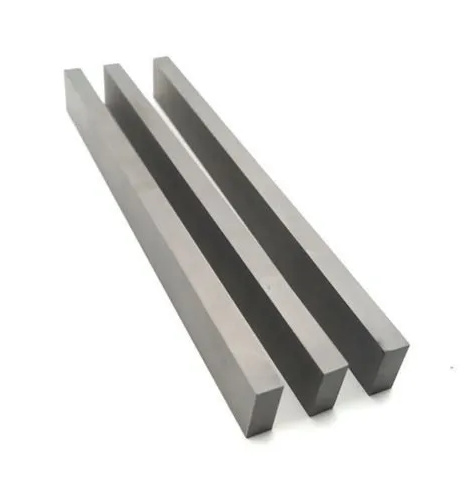
Défis courants dans l'usinage du carbure
L'usinage du carbure n'est pas une sinécure. Son extrême dureté est une arme à double tranchant - excellente pour les performances, mais exigeante pour les outils et les techniques. Examinons les défis les plus courants :
1. Usure et rupture des outils
La dureté du carbure entraîne une usure rapide des outils. Les outils de coupe, même ceux conçus pour le carbure, peuvent se détériorer rapidement, ce qui entraîne des remplacements fréquents et une augmentation des coûts.
2. Production de chaleur
L'usinage du carbure génère une chaleur importante qui peut affecter la précision et entraîner la dégradation de l'outil. La gestion de la dissipation de la chaleur est essentielle.
3. Questions relatives à l'état de surface
Il est difficile d'obtenir une finition lisse sur le carbure en raison de sa nature fragile. Un mauvais usinage peut entraîner des fissures superficielles ou des textures rugueuses.
4. Contrôle des puces
La fragilité du carbure se traduit souvent par des copeaux inégaux ou fragmentés, ce qui pose des problèmes de collecte et d'élimination.
5. Coûts d'équipement élevés
Les machines et outils spécialisés nécessaires à l'usinage du carbure coûtent cher. Cela peut dissuader les petits fabricants d'adopter cette technologie.
Innovations dans l'usinage du carbure
| L'innovation | Description | Avantages |
|---|---|---|
| Revêtements avancés | Application de revêtements tels que le TiAlN ou le carbone diamanté sur les outils de coupe. | Durée de vie accrue de l'outil, réduction de l'usure, meilleure résistance à la chaleur. |
| Rectification de haute précision | Utilisation de meules diamantées. | Amélioration de l'état de surface et de la précision dimensionnelle. |
| Systèmes d'intégration du liquide de refroidissement | Utilisation de systèmes de refroidissement à haute pression. | Gestion efficace de la chaleur, réduction de la déformation thermique. |
| Usinage assisté par laser | Préchauffage des surfaces en carbure à l'aide de lasers. | Fragilité réduite, enlèvement plus facile des copeaux. |
| Fabrication additive | Outils d'impression 3D avec des poudres de carbure. | Personnalisation des outils, réduction des déchets matériels. |
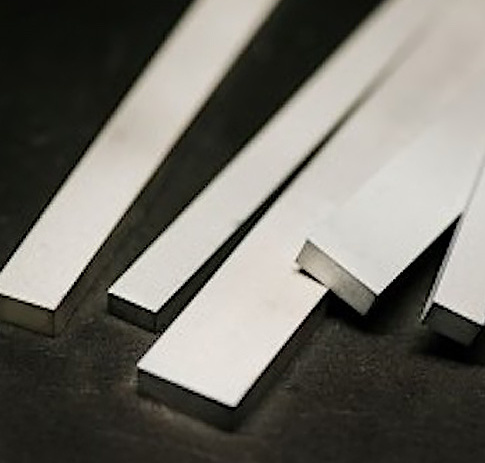

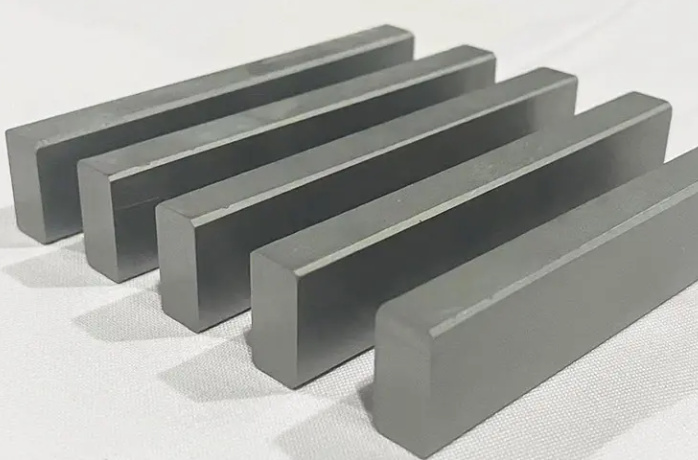
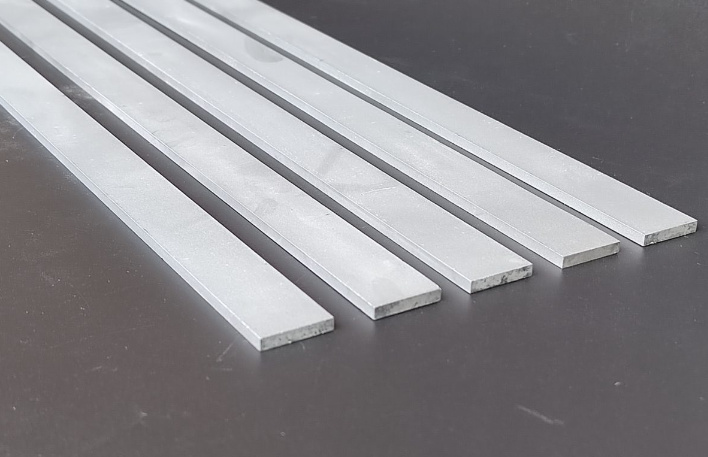
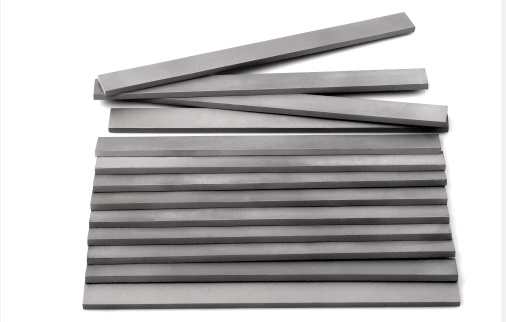
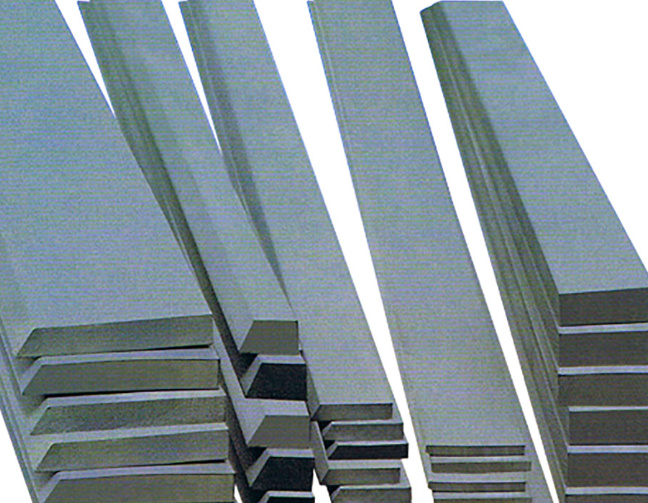
Conseils pratiques pour les fabricants
1. Choisir les bons outils
Optez pour des outils spécialement conçus pour le carbure, tels que les outils diamantés ou revêtus. Adaptez la qualité de l'outil à l'application - les qualités dures pour la résistance à l'usure, les qualités plus douces pour l'absorption des chocs.
2. Optimiser les paramètres de coupe
Équilibrez la vitesse, l'avance et la profondeur de coupe pour minimiser l'usure de l'outil. Les vitesses inférieures sont souvent plus adaptées à l'usinage du carbure.
3. Utiliser des liquides de refroidissement appropriés
Les liquides de refroidissement haute performance réduisent la chaleur et prolongent la durée de vie des outils. Envisagez le refroidissement par inondation pour les opérations de grande envergure ou le refroidissement par brouillard pour les travaux de précision.
4. Investir dans des machines de qualité
Les machines CNC à haute rigidité dotées de dispositifs d'amortissement des vibrations sont essentielles pour l'usinage du carbure. La précision est importante, il ne faut donc pas lésiner sur les moyens.
5. Entretien régulier des outils
Inspectez et réaffûtez régulièrement les outils. Un outil émoussé réduit non seulement l'efficacité, mais peut également endommager le composant en carbure.
Caractéristiques de l'usinage du carbure
L'usinage du carbure se distingue par ses caractéristiques uniques. En voici un aperçu :
- Durabilité: Les composants durent plus longtemps dans des conditions abrasives.
- Précision: Des tolérances serrées peuvent être obtenues.
- Polyvalence: Convient à un large éventail d'industries, de l'outillage à l'aérospatiale.
- Rapport coût-efficacité: Si les coûts initiaux sont élevés, les économies à long terme en termes de durabilité et de performance compensent ces coûts.
Comparaison des Les défis de l'usinage du carbure et autres substituts
| Fonctionnalité | Usinage du carbure | Usinage de l'acier | Usinage de la céramique |
|---|---|---|---|
| Dureté | Supérieure | Modéré | Haut |
| Taux d'usure de l'outil | Haut | Modéré | Faible |
| Résistance à la chaleur | Excellent | Bon | Excellent |
| Coût | Plus élevé à l'avance | Moins de frais initiaux | Haut |
| La fragilité | Sujet à l'écaillage | Moins fragile | Très fragile |
| Finition de surface Précision | Haute précision possible | Précision modérée | Excellente précision |
Éléments à prendre en compte lors de l'achat d'outils d'usinage en carbure
Lors de l'achat d'outils d'usinage en carbure, il convient de prendre en compte les éléments suivants :
- Qualité des matériaux: Assurez-vous de la compatibilité avec votre application. Le carbure de tungstène avec liant cobalt est polyvalent.
- Revêtements d'outils: Les outils revêtus durent plus longtemps et sont plus performants.
- Réputation du fournisseur: S'en tenir à des marques de confiance telles que Kennametal, Sandvik ou Ceratizit.
- Personnalisation: Pour les applications uniques, envisagez la conception d'outils sur mesure.
- Prix et performances: Les outils de haute qualité ont un coût initial plus élevé mais permettent d'économiser de l'argent à long terme.
Avantages et limites de la Les défis de l'usinage du carbure
| Aspect | Avantages | Limites |
|---|---|---|
| Dureté | Haute résistance à l'usure et à la déformation | Difficile à usiner en raison de son extrême dureté |
| Stabilité thermique | Maintien des propriétés à haute température | Nécessite des solutions de refroidissement avancées |
| Longévité | Durable dans des conditions abrasives | Coûts initiaux élevés de l'équipement |
| Précision | Tolérances serrées et finition de surface supérieure | Fragile, susceptible de s'écailler sous l'effet de la contrainte |

FAQ
| Question | Réponse |
|---|---|
| À quoi sert le carbure dans l'usinage ? | Le carbure est utilisé pour les outils de coupe, les matrices et les composants résistants à l'usure en raison de sa dureté et de sa stabilité thermique. |
| Pourquoi l'usinage du carbure est-il un défi ? | Sa dureté et sa fragilité extrêmes rendent les outils difficiles à utiliser et nécessitent un équipement spécialisé. |
| Comment prolonger la durée de vie des outils en carbure ? | Utiliser des revêtements appropriés, optimiser les paramètres de coupe et employer des techniques de refroidissement efficaces. |
| Quelles sont les industries qui bénéficient du carbure ? | Les industries de l'aérospatiale, de l'automobile, de l'outillage et de l'exploitation minière utilisent fréquemment le carbure pour sa durabilité et sa précision. |
| L'usinage du carbure est-il rentable ? | Bien que coûteux au départ, sa durabilité et ses performances permettent de réaliser d'importantes économies à long terme. |




